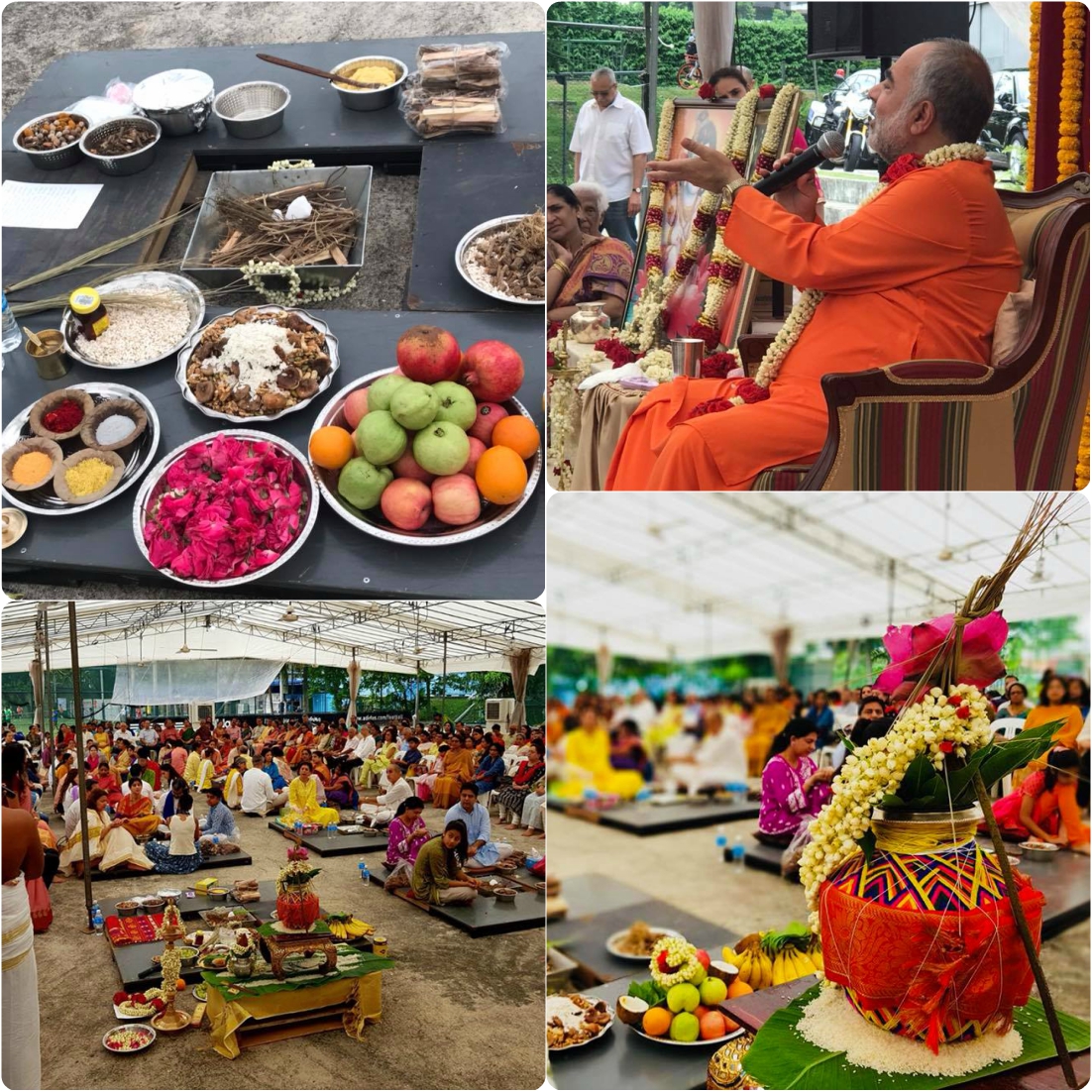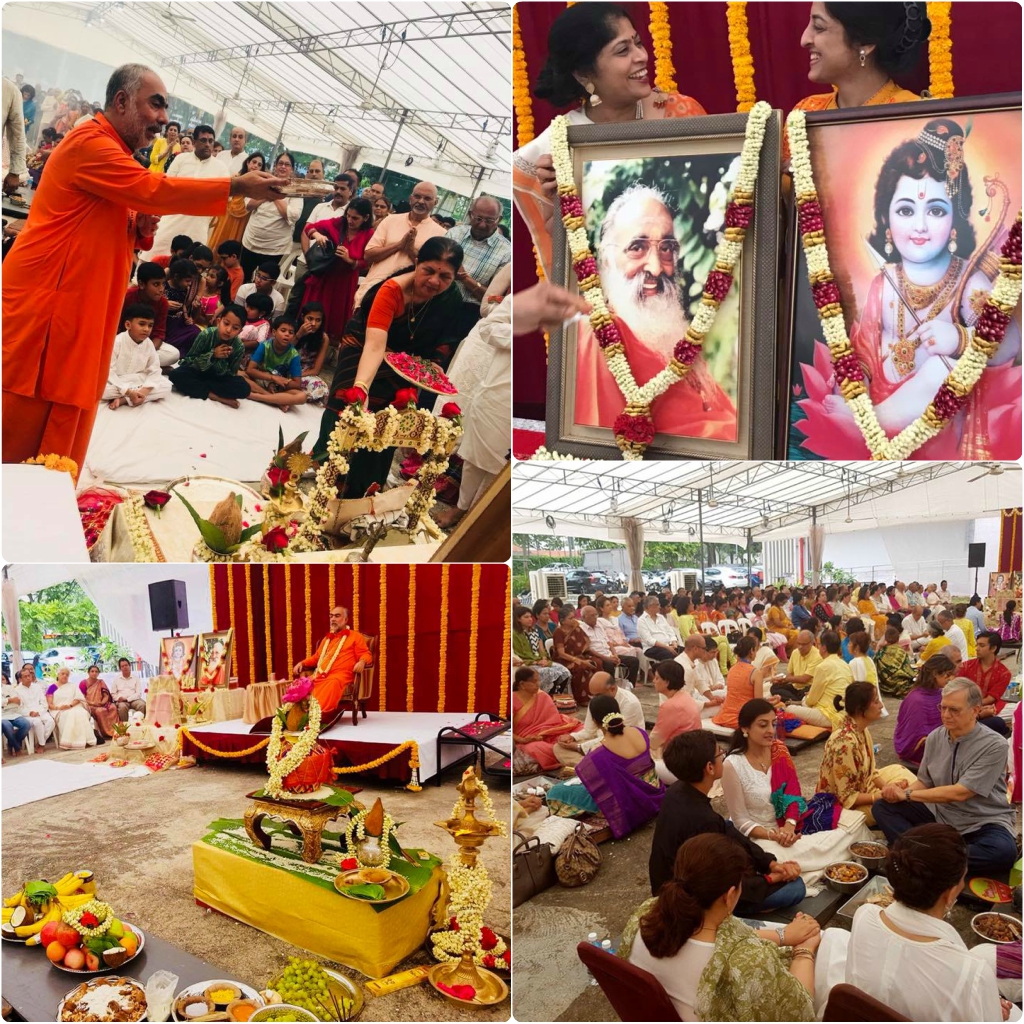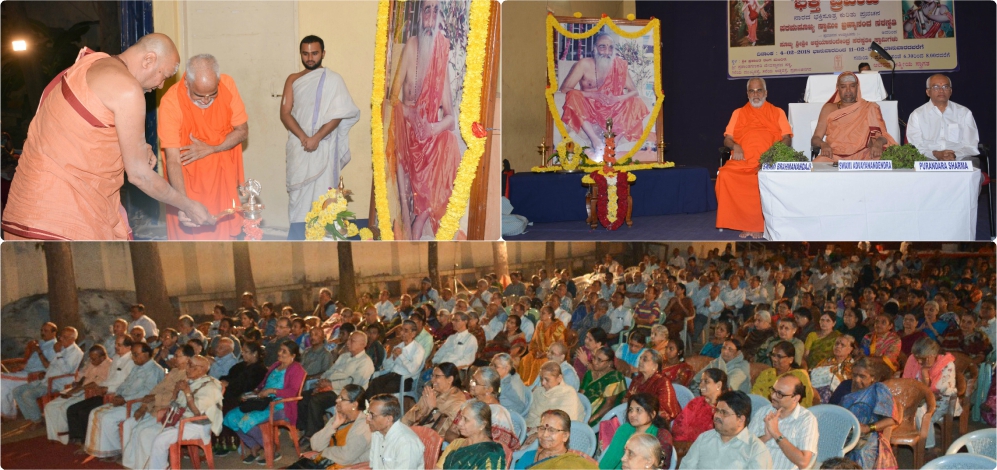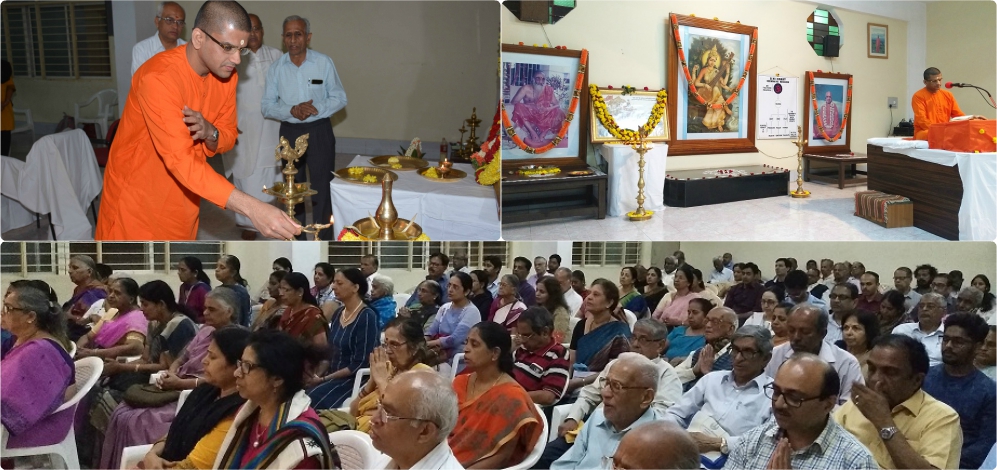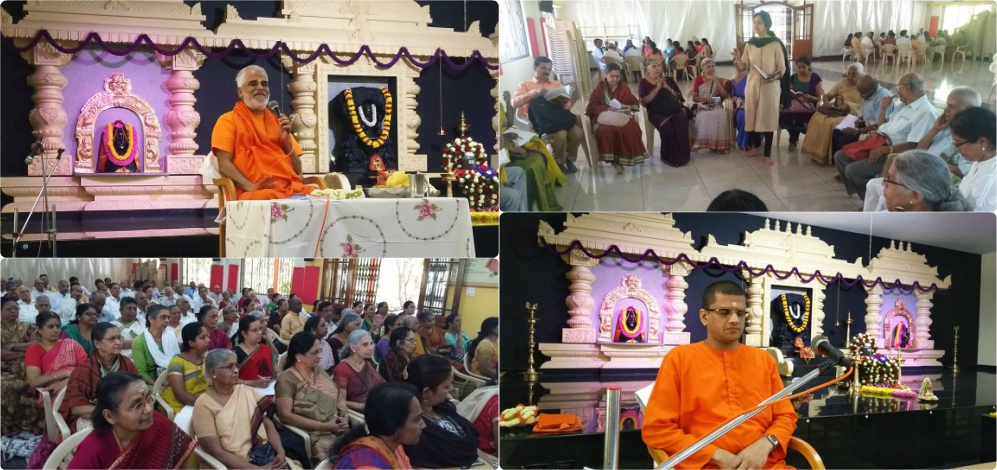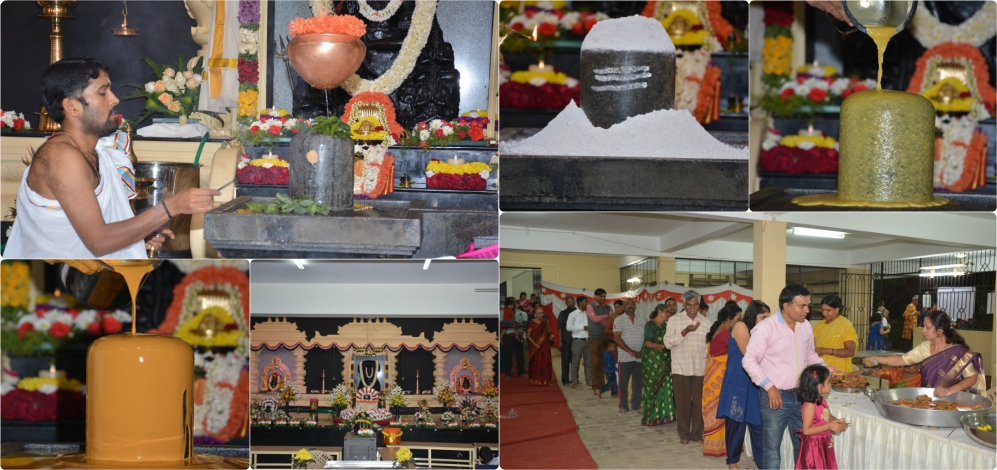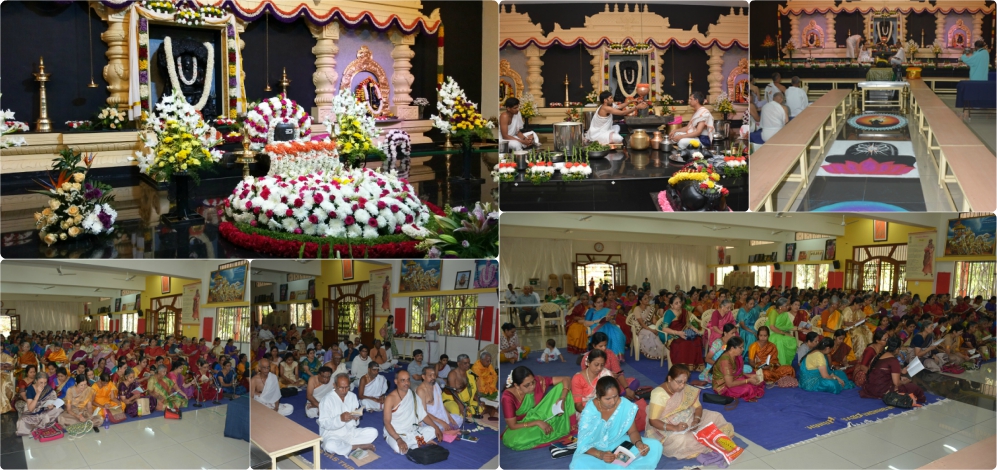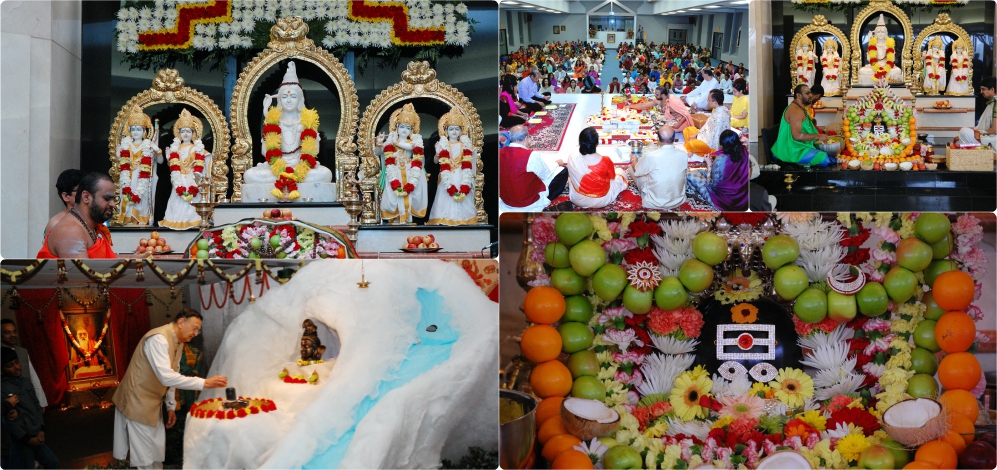The sadhana for spiritual perfection is often described as a motion without movement. A physical movement implies a shift from place to place. But the spiritual evolution is a psychic ascent which has no space nor dimensions. It is a new vision gained because of which the world appears in a different way from the way it appears to the sadhaka who is not evolved.
What exists is the one supreme, immutable and changeless Self, while what is visible is the changing, dying, vicious, ignorant and foolish individual hugging on to his multiple world. His world is a creation of his own delusions and when he comes out of his delusions, he sheds the perceptions and discovers himself to be the One without a second.
Layers of ignorance form concentric circles of varying dimensions to surround the Supreme and cover It up. Hiding thus the Truth, they recreate the whole fantasy of the world. The fantasy varies with each individual according to the bundle of Vasanas collected by him and it persists and grows unless conscious efforts are made to come out of their clutches, in the right direction. The various scriptures of the Hindus, arising from the authority of the Vedas, help and guide the Sadhakas. Since the fantasies are many and varied, the sadhanas prescribed also are as many and as varied.
To the man of utter ignorance, the world is a riddle clothed in mystery. He cannot understand it. He is tired of living but scared of dying. He plods on in the world, not knowing the why and whereof of the world. To an intelligent man capable of thinking, the world presents a continuous challenge. He makes use of his intellect to meet the challenges of life. But since his knowledge is very superficial, he can never find the true solution to the problems of the world. His solutions create new problems and yet newer ones. He gets caught up in the meshes of problems, unable to emerge out of them.
To the sadhaka, the world is a field where he can work out his Salvation … a dharma kshetra. To an evolved sadhaka with devotion in his heart, the whole world is a beautiful manifestation of his beloved Lord. He loves and serves the world because of his love for the Lord. He has no demands in the world nor is he bothered by the pin pricks of life. Finally to the man of Self – Realisation, there is no world at all but the one Truth.
These are all varying visions of the same Truth that the sadhaka gets as he is struggling on the path of spiritual evolution. Upto the final culmination in Self-Realisation, there is a sadhana to be made in some form or other. The Scriptures help the sadhakas at all levels.
The finest of the sadhanas is self enquiry or atma-vichara. Enquire into the true nature of one’s individuality. It is not open to the ordinary sadhakas to take up this path. It is successfully employed by the highly evolved sadhaka, who is on the verge of Realisation. For such sadhakas, no more and no other sadhana is needed.
To the sadhakas who have not yet come to this fine stage of enquiry, the three Vedantic paths of Karma, Bhakti and Jnana are helpful.
A man who is more identified with his physical body finds it easy to work on the path of action. Karma Yoga has three facets, each of which polish one aspect of the jewel of the mind of the karma yogi. The first facet is the thoroughness of the performance… yogah karmasu kausalam. An action has to be perfect like that of an expert who gets the maximum results with the minimum effort. The next facet is the sublimation of the desire… yagnaarthat karmanah. The usual motive behind an action is some benefit for oneself. But in the evolved field of karma yoga, the motive of an action is to be sanctified by offering it to the Lord. The final facet is to get mentally detached while an action is being performed.
Sarva karmaami manasaa sanyasyaaste sukham vashee
Navadwaare pure dehi naiva kurvan na kaarayan.
Thus the ego is rubbed out in the field of action by the karma yogin.
When the identification is more with the mind, the sadhaka turns in love to a personal form of the Lord and starts worshipping Him. Bhakti is a wooing in love and the nine forms of it are expressed by the devotee while serving the Lord. For him, the Deity in the form is real and he gets visions too. In the path of love, the devotee establishes a personal relationship with his ishta … like that of a friend, sakhya; a parent, vatsalya; like a servant, dasya; a wife, kanta; and even like a beloved, madhurya. Dedicating all actions to his ishta, the devotee forgets his own separate existence and merges in the Lord. His ego melts in the white heat of love.
When the identification of a man is with his intellect, he takes to the path of knowledge. With the help of the Scriptures, his intellect shrewdly probes into the true nature of the world and the individual; and breaks his ego with the hard bricks of reasoning. Sravana, manana and nididhyasana are the three stages of this path. First of all he must listen to a teacher and understand the Scriptural truths – it exposes him to higher thinking. Next is manana or reflection, to gain a firm and deep conviction about the statements made in the Scriptures. It makes him involved in the Vedantic knowledge. Finally, he has to live the truths understood by him. This is called nididhyasana or the commitment to spiritual life. The ego gets blown to pieces in this rational and logical approach to Truth.
The above three Vedantic paths also require a degree of maturity and ripeness in the sadhaka. Otherwise the paths will not come naturally and will not yield satisfactory results. Lesser evolved sadhakas are provided with some other means of hastening the maturity. They are four paths of hatha yoga, laya yoga, mantra yoga and raja yoga. Though they serve as preliminary aids to beginners, in the case of highly evolved sadhakas, these very yogas are capable of giving them the highest visions.
All these yogas are based upon the phenomena that emerge out of the combination of spirit and matter. In the combination of the spirit and matter, the jeeva is born and he observes four fundamental expressions in the world – prana (movement), mana (mind), nada (sound) and vaak (speech). In fact all these are grossifications of the subtle movement alone, but since these four are the four distinct expressions that are responsible for the delusory vision of the world, the Scriptures provide different paths for sadhakas on the basis of these four expressions.
Hatha Yoga is the science of the control of prana from the outer crust of the physical body to the deeper realms of the personality until it finally stops and culminates in the atma. It begins with the control of the breath by the four techniques of pooraka, i.e., breathing in, kumbhaka or retention, rechaka, i.e., the breathing out, and soonyaka or the keeping out of the breath.
Practicing this as per the instructions of the shastras, the sadhaka comes to the second phase of controlling the movement of prana or vitality in the two nerves ida and pingala. When he becomes an adept in the control and becomes capable of changing the course of vitality from one nerve to the other at will, he moves onto the third stage of pushing the vitality into the sushumna, the central nerve which is only a cavity. The vitality is pushed up through the chakras until it reaches the sahasrara and merges in Self.
Based upon the sounds in the outer world, nadabrahmopasana has evolved. The great saint-musicians Tyagaraja and others were nadopasaks. The seven natural sounds in the outer world have been taken up as the basic swaras of music and the whole sangeeta shastra is based upon them as follows:
Sa the cry of the peacock which has the two sounds of lower and higher pitches
Ri the cry of the bull
Ga the cry of the goat
Ma the cry of krauncha bird
Pa the voice of the koel in spring time
Da the neighing of the horse
Ni the shout of the elephant
Doing the upasana of the sounds, the great saints merged into the Silence beyond the sounds.
Laya yoga on the other hand deals with the variety of sounds which are within the individual. They are heard as the sound of the flute, bell, thunder, etc. – the dasa vidha nada or the ten types of sounds. The Sadhaka concentrates on these sounds and while listening to them intently, the mind becomes vacant and disappears. The disappearance of the mind results in the realization of the Self.
Raja Yoga is the science that directly deals with the mind’s functions. By bringing the fabrics of the mind into fine integration, the mind of the sadhaka is made to get fired on various objects of sense perceptions. When the mind has finally reached the perfection of integration, the objects are removed and the mind becomes objectless Awareness.
Mantra Yoga is the science developed on the basis of speech. Speech is the faculty of the human mind which thinks in terms of symbols. The symbols are the fifty alphabets of the Sanskrit language. Each one of them stands for several ideas. In their mutual permutations and combinations, the total world with all its complicated sciences can be explained. Hence the alphabets are called bija-akshara or the imperishable seeds that can project all the ideas in the world endlessly. Knowing the full dimensions of the power of thought, the alphabets have been carefully selected and formulated into mantras by the great sages to represent the various forces in the world as deities. The name of each deity is the sound form of that deity and the deity can be invoked by doing the japa of the mantra received from the Guru. The devotee gets the actual vision of the deity as a result of his loving invocation.
Each deity thus invoked has certain powers and faculties; he must therefore have a way of functioning. His movement pattern is called yantra. The upasana of the deity through yantra is a very powerful upasana of the Tantra Sastra. Adi Sankaracharya made ample use of the powerful yantras by installing them in all the famous temples of our country and bringing extra ordinary powers thereby. The temples are constructed according to the tantra pattern of the deity to be worshipped therein. The power of the deities is derived from the pattern of their constructions, and the pattern of the rituals and offerings.
Since individual deities represent the different powers and forces in the world, all of them must necessarily fall into the total pattern of the cosmos, which is represented by the Srichakra. Srichakra is the basis of all the chakras and hence known as the matrika.
This basic movement represented by the Srichakra is not that of the total vasanas but that of the Pure Consciousness Itself which expands and stretches in a thrill of ecstasy and joy. On this basic pattern provided by the movement of Consciousness, the total vasanas get stretched and expanded like molten iron flowing into the grooves of a mould. Just as the molten iron gets the shape of the mould, the vasanas too stretching in the pattern provided by the basic pattern of the Srichakra, get shaped out into the variety of the world. The Vasanas are ever changing and therefore the world undergoes many variations but the original pattern of the Srichakra never changes. It remains immutable and changeless and therefore represents the highest manifestation of the Supreme. In the centre is the motionless Supreme while the moving Supreme surrounds It lovingly. It has no name, no form and no sound. The forms and the names and the sounds are superimposed on It. The Motionless and the Moving are one in two and two in one.
The expressions of the Supreme seen in the world as prana, mana, nada and vaak are all part of this great pattern called Sricakra – which means beautiful movement or enjoyment.
The movement aspect of the Pure Consciousness is worshipped in the sound form as Srividya of 16 letters, and also worshipped in a visible form as Srilalitha. An upasaka of the Srichakra or Srividya or Srilalitha, if he is worldly and immature, seeks worldly boons and gets them. If he is mature, he seeks the Supreme, he reaches the Motionless through the Moving and gets merged into It.
These are a few of the major Sadhanas with which most of the sahdakas are generally familiar. There are many more minor and less known sadhana techniques contained in the Upanishads. Ninety eight of the recognised Upanishads give one or the other of the sadhana techniques while the ten main Upanishads called the Dasopanishad contain in them the rudiments of all the paths.
As we have seen at the outset itself, all these paths are nothing but various techniques employed to help the sadhaka in coming out of his self-created delusions. The Sadhana techniques are as imaginary as delusions themselves from the absolute stand point. There is neither the world nor the jeeva, neither bondage nor liberation. There is neither sadhaka nor a siddha. Look out, there is the world. Look in, the world has ended. The great sage Ramana Maharshi looked in and the world ended for him.
Mandukya is the one Upanishad that brings out clearly this wonderful Truth direct and uncompromising. There is no world except in seeing. The Mahavakya, Ayam Atma Brahma, brings forth this Truth. To the Sadhaka it points out that the Self within is nearer than the nearest, being the very basis of the ego that sees the world. It explains the world in another way. Who is the Creator/Brahma of this visible world? Ayam Atma is the answer. Atma has one derivative meaning – that which stretches. The moving stretching aspect of the very Consciousness is Brahma, the Creator. If this aspect is quiet, there is no world.
By – SWAMINI SARADAPRIYANANDA.
